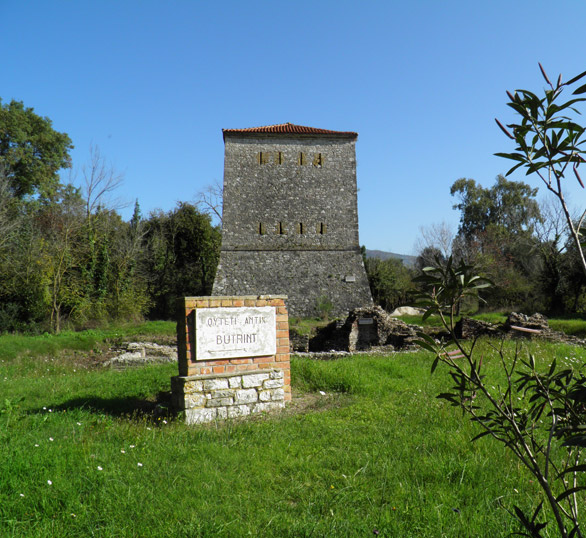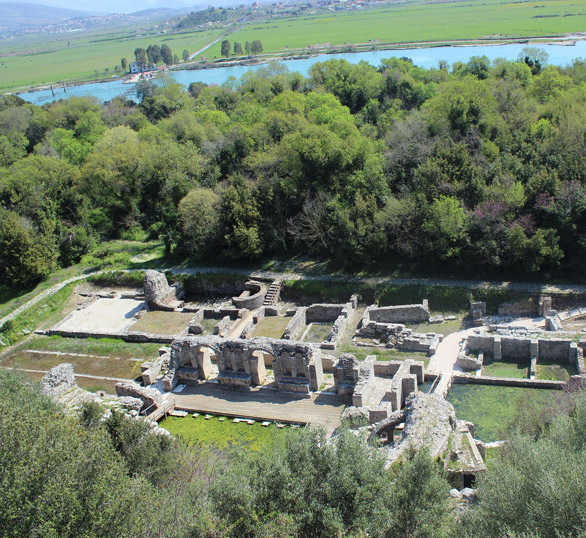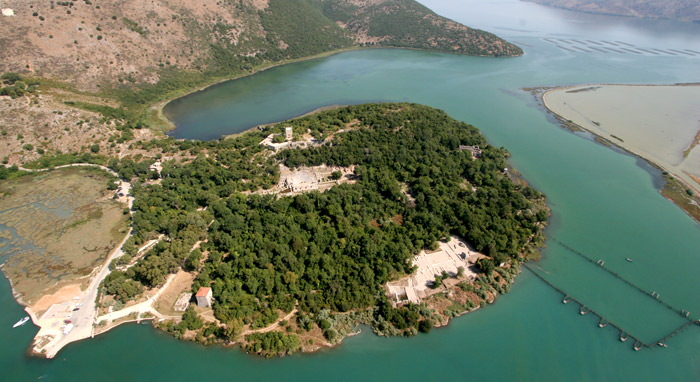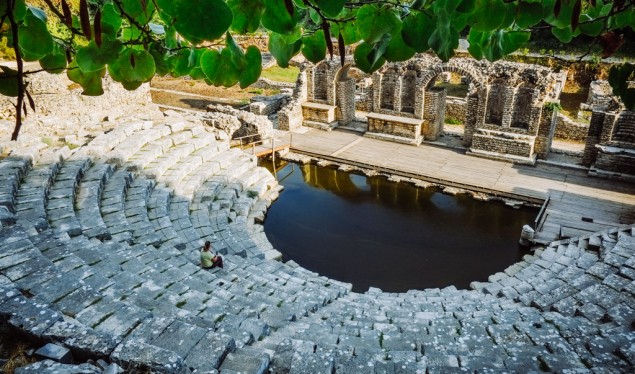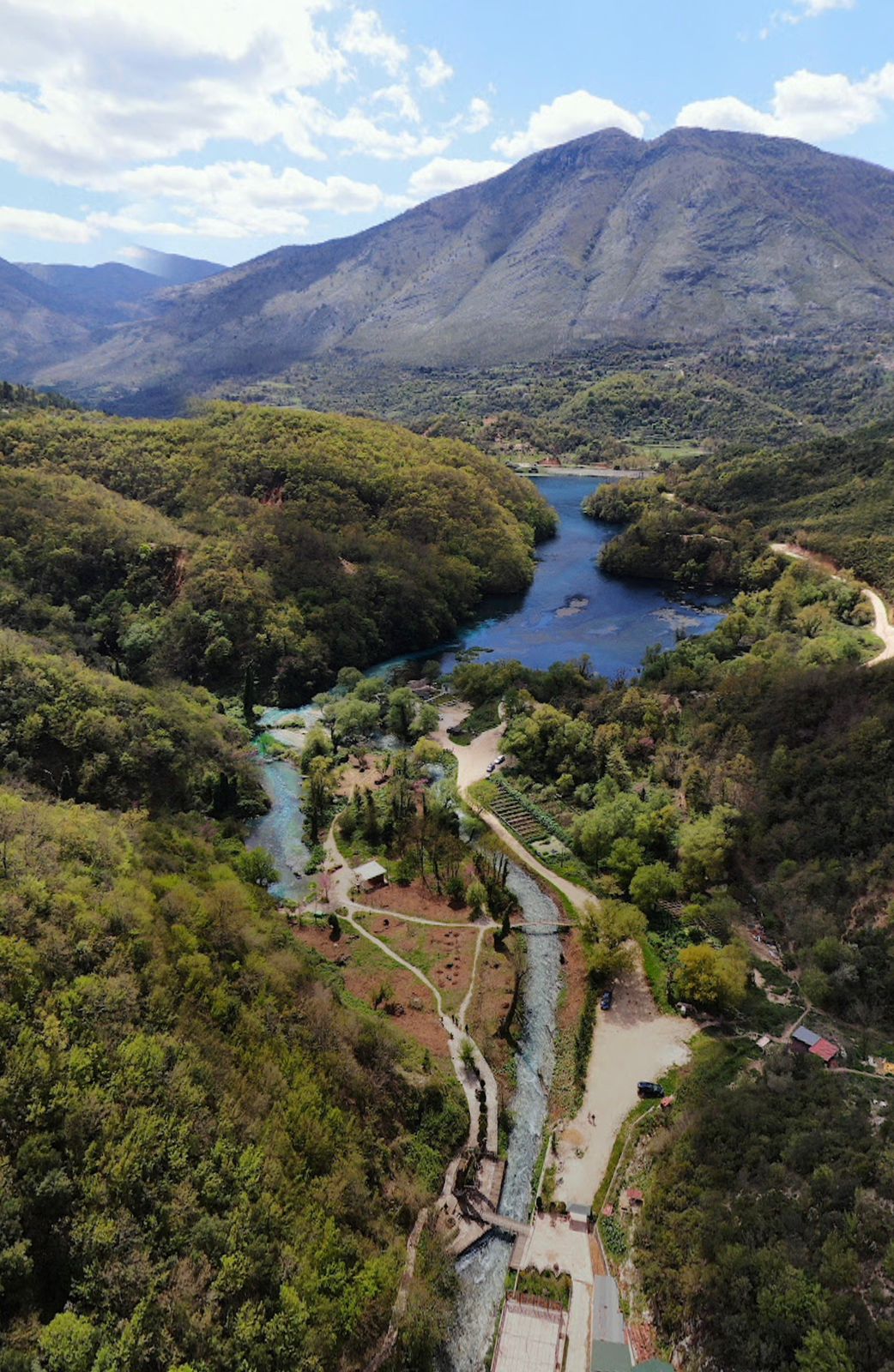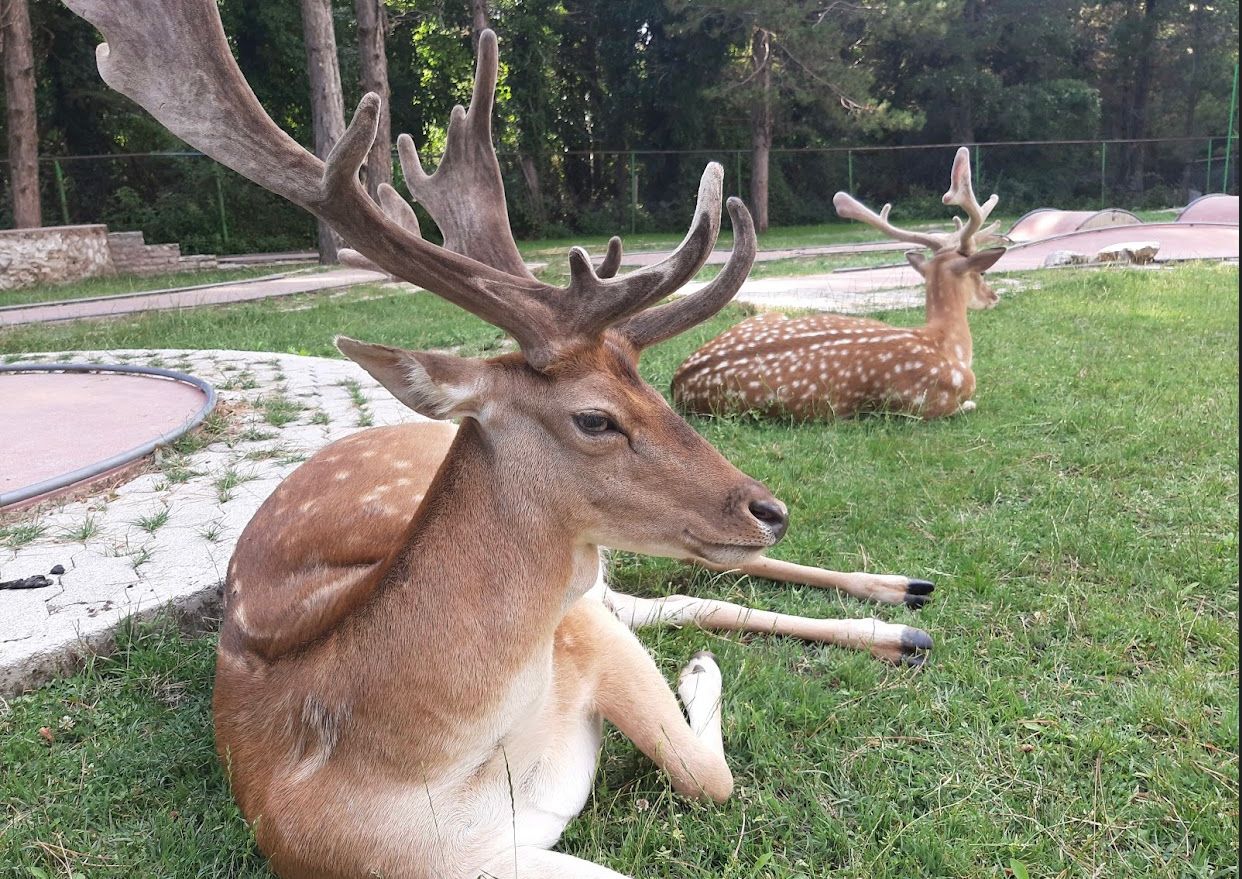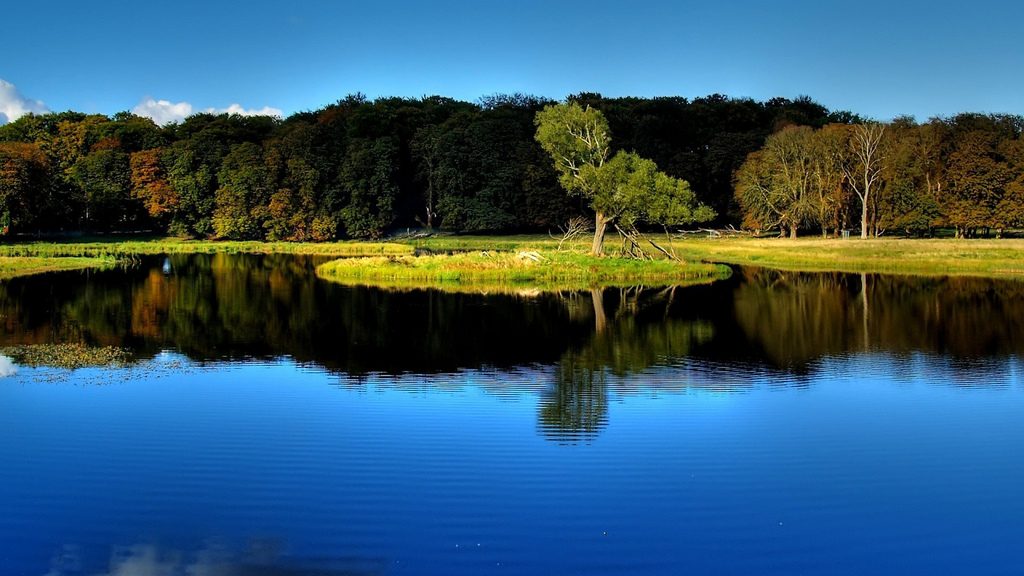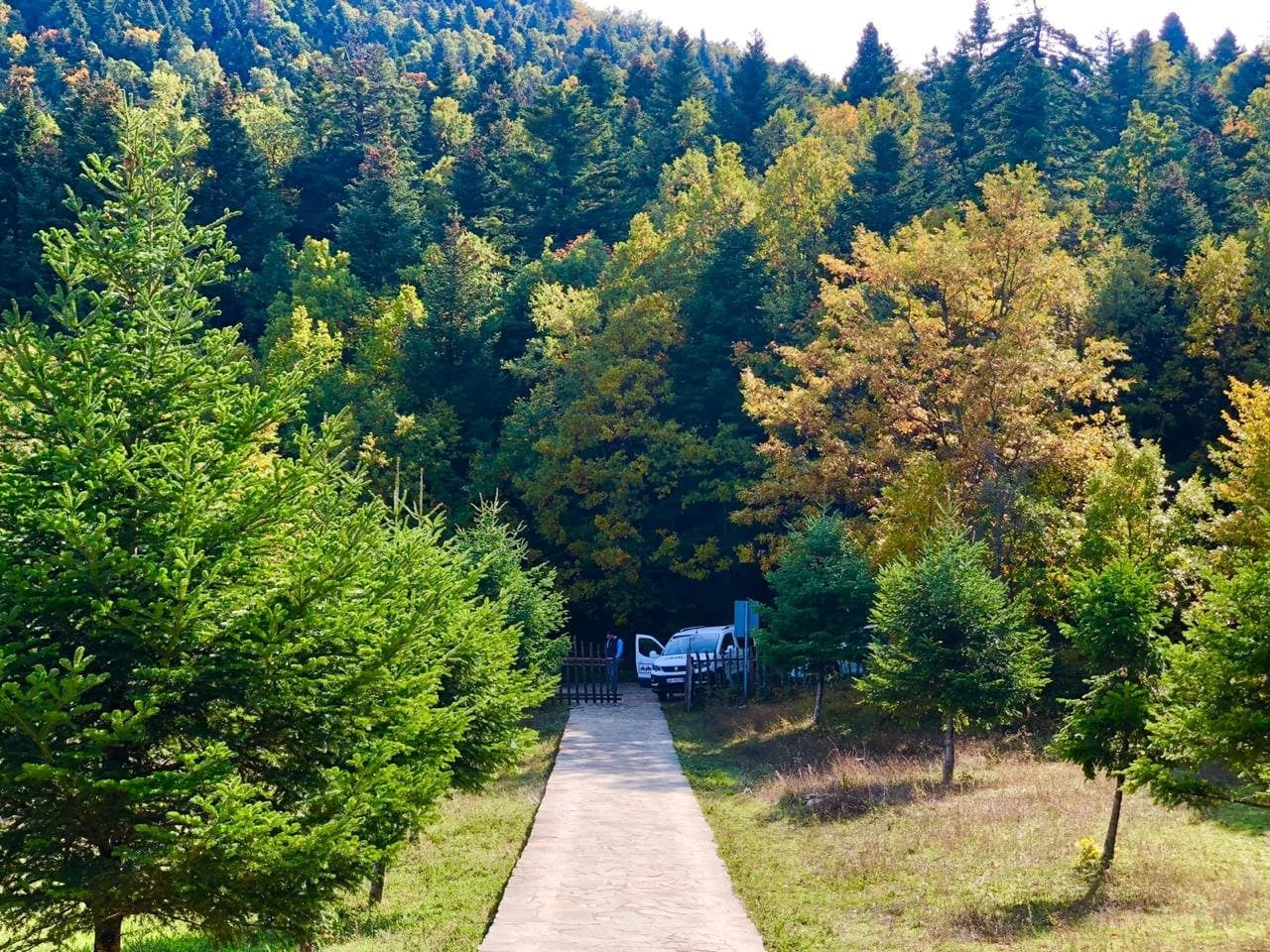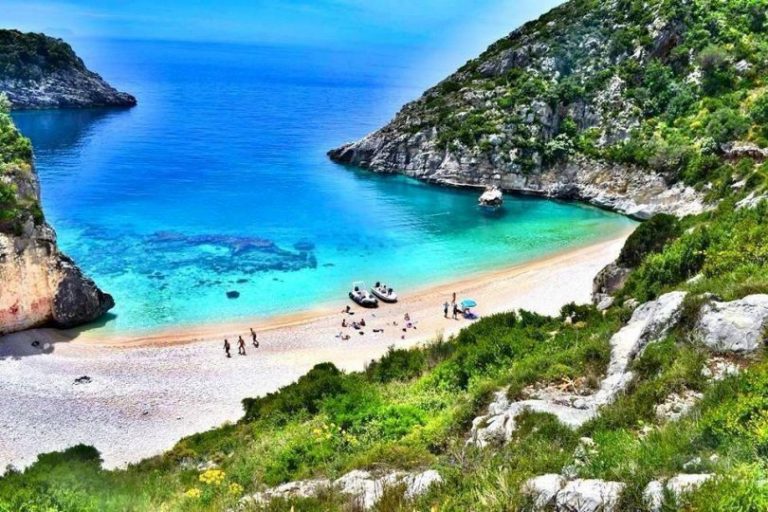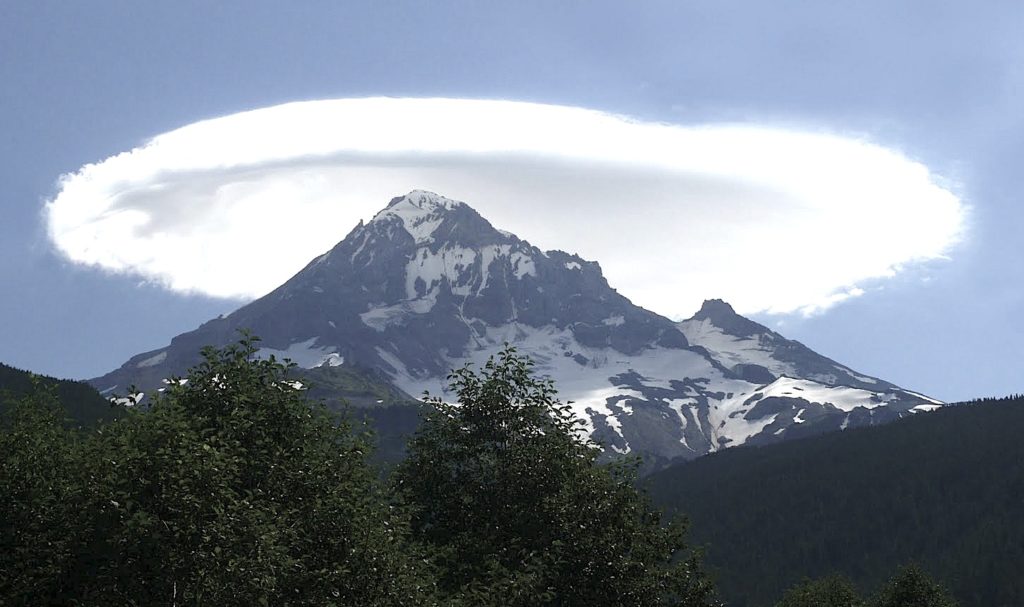Butrint, located in the south of Albania about 20 km from the modern city of Saranda, has a special atmosphere created by a combination of archaeology, monuments and nature in the Mediterranean. It was opened to the public in 1950.
This country is a microcosm of Mediterranean history, with occupation dating from 50,000 BC, in its earliest evidence, to the 19th century AD.
From 800 BC until the arrival of the Romans, Butrint was influenced by Greek culture, bearing elements of a “polis” and being settled by Chaonian tribes. In 44 BC Butrint became a Roman colony and expanded considerably on reclaimed marshland, primarily to the south across the Vivari Channel, where an aqueduct was built. In the 5th century AD Butrint became an Episcopal centre; it was fortified and substantial early Christian structures were built. After a period of abandonment, Butrint was reconstructed under Byzantine control in the 9th century. Butrint and its territory came under Angevin and then Venetian control in the 14th century. Several attacks by despots of Epirus and then later by Ottomans led to the strengthening and extension of the defensive works of Butrint. At the beginning of the 19th century, a new fortress was added to the defensive system of Butrint at the mouth of the Vivari Channel. It was built by Ali Pasha, an Albanian Ottoman ruler who controlled Butrint and the area until its final abandonment.
In 1992, Butrinti was accepted as the first archaeological settlement of the Republic of Albania in the UNESCO World Heritage List. Due to the civil unrest of 1997, the World Heritage Committee in December of this year included Butrint in the List of World Heritage in Danger.



